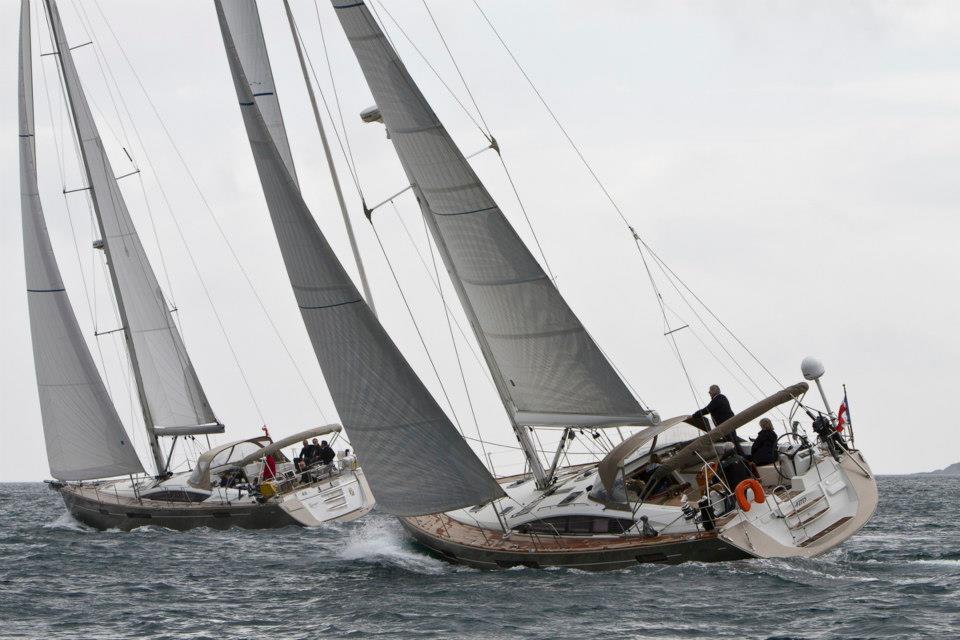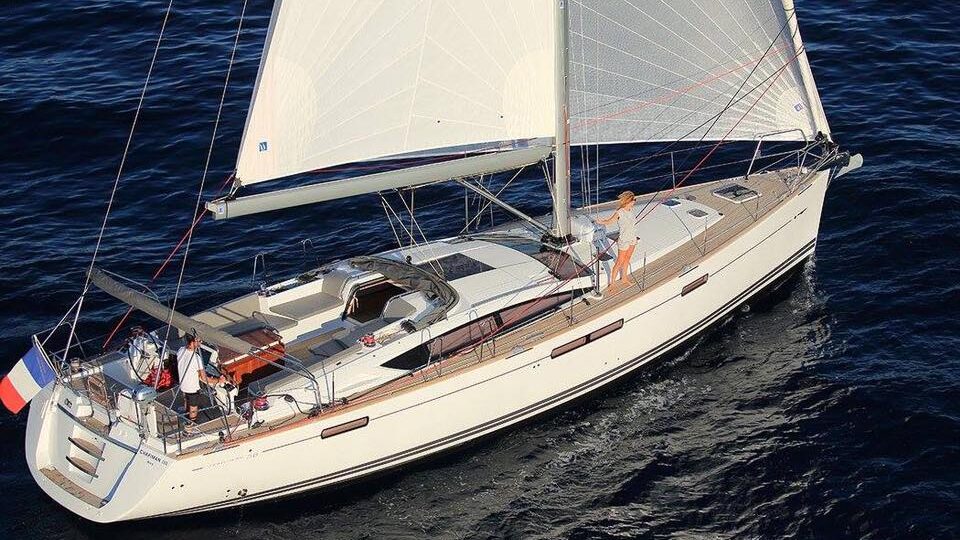Jeanneau vs Dufour: Which is a Better Sailiboat?
Jeanneau has been around for more than 60 years, from 1967 to date, and has produced over 40 vessel models that comprise different outboard, inboard, sailboat, and yacht vessels.
Jeanneau is of French origin, with a boatyard in Les Herbiers in the Vendee. They are monohulls specialists with the Lagoon brand producing their multihulls catamarans. This Company joined up in partnership with Groupe Beneteau in 1995 and created Jeanneau America in 1996. Under their belt are many accolades celebrating the uniqueness and superiority of their vessels, such as the Sun Fast 3200, which was designed by Daniel Andrieu that went on to win the ‘European Yacht of the Year 2008’. The Sun Odyssey series, especially 440, 490, and 410, have all won international awards all over the world.
Dufour Yachts is a French-based accolade-winning boatyard that makes yacht cruisers and has been in the business for 50 years. Over many years of boat production with so many wins accounted for, the Dufour company went on ahead to make the Dufour 405 Grand Large which was elected ‘European Yacht of the Year’ in 2010. They were then acquired by the Bavaria Yacht Group. Other Dufour boats that went ahead to win accolades include the Dufour 36p, named ‘European Boat of the Year’ and ‘Sailing World Magazine Boat of the Year 2013’, and the Dufour 500, which also made the ‘Cruising World Magazine of the Year’ in 2014 amongst many others. Lately, in 2018 Fountaine Pajot acquired Dufour Yachts and is still their leadership to date.
Jeanneau vs Dufour – The Comparison
To decide which is the better of the two companies, we shall be comparing each one of their flagship cruisers. We have for the Dufour Yachts the Dufour 61 and the Jeanneau 60 representing the Jeanneau. As usual, these vessels are chosen because of their similarities to monohulls and sailboats, and most importantly, they are nearly the same length; each is in the 60-foot to 65-foot range. Also, apart from being flagships, their release dates are both within the current decade.
Built Quality
The Jeanneau 60 is a true beauty, and her new look is a testimony to the innovation and dedication of the Jeanneau to continue revolutionizing cruise sailing. Her elongated silhouette, combined with the utility its interior layout provides, has enabled her to suit whatever cruising style she is put to. While it was Andrew Winch who fiddled with and created a near-perfect balance on the interior of the J 50, Phillipe Briand has seen to it that the architecture is and will remain one to reckon with when uniqueness, elegance, strength, and durability is mentioned.
Dufour 61 has the combined grace of comfort and performance with an exquisitely new design. One could see that it was crafted according to Dufour traditions and promises luxury, simplicity, and great performance. It was designed by Felci Yacht Design.
Comfort
Out on the Dufour 61 deck, the cockpit sits free with the option of having a large center sundeck. Generally, there are two different galley layouts available to choose from, and no matter which you choose, space and ample natural light are guaranteed to be sufficient. The layout that puts the galley in the fore interconnects with the cabins, while the one located on the lengthwise portside seems to give off a chef’s office’s aura and also creates a lot of room for a large saloon.
The 61 offers 3 or 4 cabins and the option to have the skipper’s cabin situated at the forepeak at the expense of the sail locker. It has a minimum of three heads, with one built into the master cabin. The master cabin has both storage space and headroom advantages and offers total privacy from the other parts of the boat.
Jeanneau 60 interior sports 3 different layouts for its living space and heads, namely: 3 cabins with 3 heads, 4 cabins with 4 heads, or 5 cabins with 3 heads. The three styles available for trimming the beds and headboards are sand, affogato, and royal blue. The galley’s position has, however, been moved forward to the mast bulkhead in order to create an even roomier saloon in the hull’s widest area. The woodwork of the interiors, galley, saloon and living spaces varies between white oak or the more appreciated teak (due to its color being more preserved), all open-pore and varnished, each with its complementing floorboards. The Foglizzo top-of-the-range leather can be provided in Duke and Lugano range.
Overall Design
The architect of this model is none other than Felci Yacht Design, a pro in the art of monolithic hull construction, a key feature that this model is graced to have. The hull at completion measures 60 feet lengthwise and is 18 feet wide. Its deck has been structured using polyester & fiberglass infusion. The deck layout of the Dufour 61 offers wide passageways for movement. The side decks, upon a quick observation, can easily be classified as wide, and there is a very easy way to exit the cockpit through the use of a small step that lies forward of the helm. All control lines are led aft such that there are no clutters on the deck; therefore, it appears satisfactorily neat. Its keel weighs 6.5 tons and is a fin-and-bulb type of keel.
The 60 Jeanneau is a masterpiece conceived by the masterminds of yacht architecture and design, Phillipe Briand of Phillipe Briand Yacht design, and the Winch Design boss, Andrew Winch. This baby was made to have a variation on the keel; therefore, you can either have the deep keel draft version or the shoal keel.
Much can be said about the decks; an extra inch added to its sides would make it sufficient for a singles sprint, but as it is, it sure does allow easy movement from the foredeck to the cockpit. Cushions and canvasses that grace the very spacious cockpit are of grey and graphite ambiances, alongside its multi-purpose tables and seats that will easily seat many. Her standard keel draught is 8 feet and 4 inches, while when it is shallow, it is 6 feet and 8 inches.

>>Also Read: Beneteau Vs Jeanneau: Which Sailboat is Better?
Sailworthiness
A seaworthy vessel is one that has been made to meet the expectations of any daring seafarer, and this new exotic Dufour is not found wanting in any aspect, strength, comfort, durability, and performance. Its hull and supporting architecture are of monolithic infused fabrication; the bulwark is directly integrated into the boat’s hull, resulting in a very stiff hull, strong enough to withstand high-pressure elements in the deep waters.
On the side of comfort, a feature that must not be put aside while talking about a vessel’s seaworthiness, a smaller coach roof was implemented, thus making way for a larger foredeck, and consequently, natural light can enter in abundance into the below decks through the many windows.
Neither does the J 60 model fail to meet every expectation required of it by her builders and owners; with innovation and a sophisticated aesthetic, this model ushers in beauty from a new era and more sophistication to meet every seaworthy checklist.
Performance
Talking about the general specifications that determine the efficiency and performance of the 61 models, we look at the engine power that powers the beauty, a 180 horsepower engine and an efficient fuel capacity of 206 gallons. The water capacity is measured at 232 gallons. Its sail area is at 1,706 square feet, mainsail 1,119.4 square feet, and the genoa is at 710.4 square feet, while the draft is 9.19 feet.
Jeanneau 60 also contends for the chief among the two in terms of performance with its monohull and total displacement at 44,467 pounds and a draft with a depth of 8 feet and 4 inches. Bearing in mind that this seafarer’s overall length is just 60 feet and its hull 17 foot and an inch wide in imperial calculations. The standard option of this beautiful cruiser is egged on by a Yanmar /110CV engine that produces a maximum of 108.6 horsepower or 80-kilowatt power to keep the boat on the go and is juiced by the fuel stored in an 84-gallon volume fuel tank. The water capacity is just slightly above that at 1 x 100 gallons.
>>Also Read: Jeanneau 64 Review
Jeanneau vs Dufour – Summary
I just love how the Jeanneau cuts into the water, and it is not news that the Jeanneau 60s dominate this line of commercial vessels. The Dufour 61, in all its style and vintage design, sure has its work cut out for it. We can see for a fact that the Dufour will definitely sail longer before needing a refill of any kind, be it water or fuel, and to us, this is an added advantage for people that intend to go farther into the water without having to worry so much about such mundanities.
